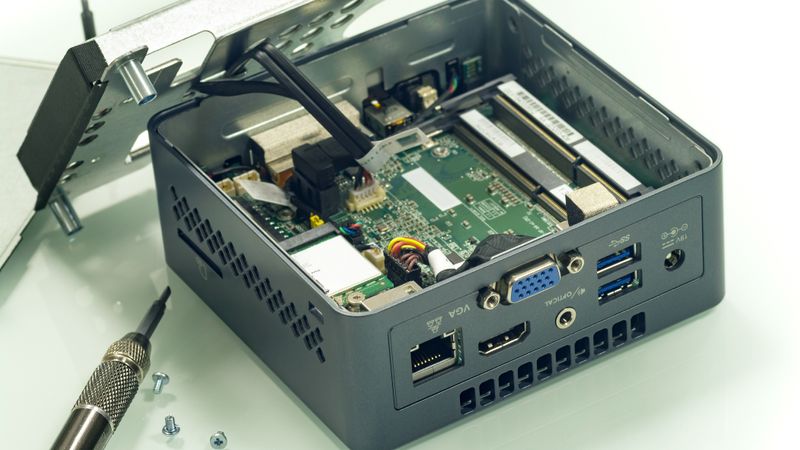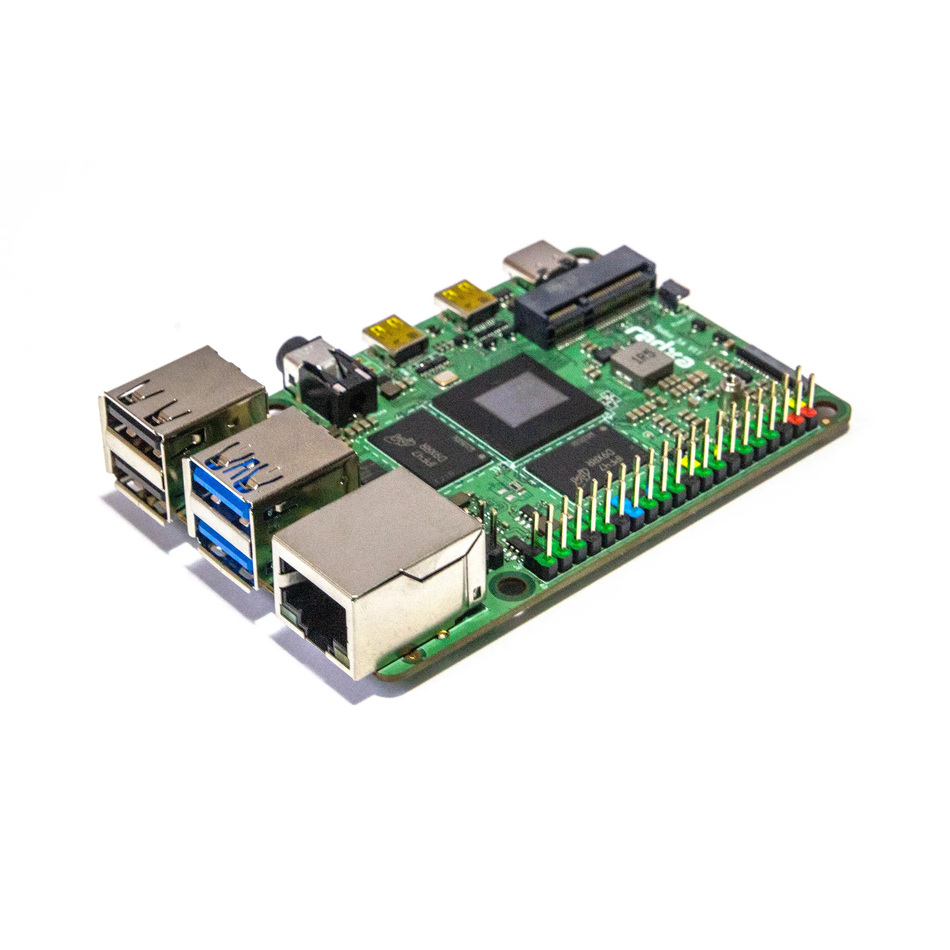Diagnostic Strategies for Troubleshooting in SBCs
An examination of troubleshooting techniques for single board computer issues.
Single board computers (SBCs) are extensively utilized in embedded systems. SBCs have processor, storage, memory, input/output ports, and other features in their building in a single circuit. Companies use SBCs in commercial applications, such as industrial automation, robotics, or smart homes, and enthusiastic users also use SBCs to develop their projects. However, these robust and compact units are not without their challenges. From power and boot problems to network connectivity and software failures, SBCs present various issues, each requiring a different resolution strategy. This article offers a manual for troubleshooting the most common SBC problems, addressing hardware and software issues, and ensuring the ideal functionality of these essential computing devices.
Navigating Hardware Issues in SBCs
The hardware issues that impede use and cause inconvenience to SBC users can be divided into three main categories: power anomalies, boot problems, and hardware connectivity problems.
Power anomalies
Power-related problems in SBCs usually manifest as power failures, unexpected shutdowns, or erratic performance. These problems typically originate from the power supply or the board's power management components. It is imperative to validate the power supply's adherence to the voltage and current criteria specified by the manufacturer. In the case of battery-powered SBCs, it is crucial to check the battery's health, the state of charge, and secure connectivity.
If the power supply proves satisfactory, it is advisable to inspect the board for indicators of physical damage. Specifically, a thorough examination of power regulation elements such as capacitors, resistors, and inductors is recommended, especially for signs of overheating, discoloration, or damage.
Boot problems
Boot-related issues can stem from various sources, including corrupted boot files, defective storage components, or incompatible peripheral devices. The initial stage of troubleshooting involves validating the state of the boot media. Should the medium be a microSD card or eMMC, examining its functionality on an alternative device is prudent. Furthermore, assurance of the proper installation and integrity of boot files and the operating system is essential.
Additionally, it recommends temporarily disconnecting all peripheral devices for booting purposes. If the initialization is successful, reconnect the peripherals individually to identify any compatibility issues with the SBC.
Hardware connectivity problems
Troubles relating to hardware connectivity typically arise during the interaction of SBCs with peripheral devices. In such cases, the recommended course of action is to assess the physical connections. Examining the connectors for looseness or damage and verifying precise and secure wiring is essential for the connectivity in the SBC.
Subsequently, an evaluation of the compatibility between the SBC and the peripheral device is required. This involves ensuring that voltage levels, communication protocols, and driver support are appropriately aligned and examining the necessary software configuration settings associated with the respective peripherals.
Solving/Addressing Software Problems in SBCs
Problem-solving related to software used in SBCs basically covers the following points: software defects and anomalies, network connectivity, and sustaining ideal SBC performance.
Software defects and anomalies
Software complications in SBCs are identifiable through system failures, decreased performance, or malfunctioning of specific resources. In troubleshooting, examining the system logs for error messages is advisable. System logs, integrated into most operating systems, provide information on the causes of problems, making it possible to identify the source and causes of problems in the software used in the SBC.
Additionally, maintaining up-to-date system software, libraries, and dependencies is crucial. Software errors are often corrected in subsequent versions, thus highlighting the importance of continuous system updates. Therefore, keeping the operating system and drivers up to date is a key part of avoiding anomalies in the SBC software.
Network connectivity challenges
Network connectivity problems on the SBC require an initial assessment of the physical network connection when the standard ethernet cable connection on the board applies. In the case of wireless connections, it is necessary to check the strength of the Wi-Fi signal and the correct configuration of the network settings on the device.
When dealing with network connection software, it's helpful to use diagnostic tools to assess the interface status. It's important to ensure the driver is installed correctly and there are no firewall restrictions on essential ports for a smooth connection.
Sustaining ideal SBC performance
Routine maintenance is essential to avoid common problems with SBCs. This includes cleaning the device to prevent dust accumulation, a precursor to overheating, and facilitating proper ventilation, allowing the device to operate without crashing or unwanted shutdowns. Furthermore, regular software updates, adherence to appropriate shutdown protocols, and the establishment of data backups contribute substantially to the sustained health of an SBC. Therefore, by applying these practices, it is possible to obtain maximum performance from the device and avoid future problems in its operation.
Leveraging the ROCK Series for Effective SBC Troubleshooting
The ROCK series of high-performance SBCs, developed by OKdo in collaboration with Radxa, which uses a powerful Rockchip processor, bring technological advances to these devices. They can be used in applications such as industrial automation, smart homes, precision agriculture, advertising campaigns, and by technology enthusiasts as personal computers.
A notable feature of the ROCK series is its careful power management design. Equipped with advanced voltage regulation components, such as precision capacitors and efficient inductors, these SBCs effectively minimize potential power-related issues. This is especially important for identifying and resolving problems arising from power irregularities, such as irregular behavior and unexpected shutdowns. The fine-tuned control and real-time monitoring of the ROCK series allows engineers to quickly resolve power problems, reducing downtime and ensuring uninterrupted operation.
Additionally, the ROCK series offers versatile and robust connectivity options, including USB, Ethernet, HDMI, and GPIO interfaces, enabling smooth interactions with various peripheral devices. This flexibility greatly aids in diagnosing hardware connectivity issues, a common troubleshooting area. By systematically connecting and disconnecting peripherals, engineers can identify concerns, compatibility gaps, and faulty connections using the ROCK series. Furthermore, the robustness of the connections offers better electrical contact between the conductors and better mechanical fixation between the devices.
The ROCK series architecture is well structured to support different operating systems, such as Ubuntu, Debian, and Android, and software stacks, making it easy to isolate bugs and software faults systematically. With debugging tools and comprehensive system logs, engineers gain valuable insight into the causes of system crashes, poor performance, and other software-related anomalies. This level of detail allows engineers to make informed decisions, apply patches promptly, and maintain software integrity.
An example of this robustness and versatility in facilitating troubleshooting is the OKdo ROCK 5 Model A. The ROCK 5 supports various power supply technologies, such as USB Type‑C™ PD and Qualcomm® Quick Charge™, including intelligent power adapters and fixed voltage. It is recommended to use a power supply that can deliver at least 24W without an M.2 NVME SSD or 30W with an M.2 NVME SSD when powering this SBC to avoid power issues.
ROCK 5 Model A operates using Arm big.LITTLE technology can automatically select which processor core to use for a given task. Consequently, this results in minimal heat generation and a responsive user experience, avoiding overheating problems due to excessive tasks. The SBC ROCK 5 has an SoC RK3588S specified to limit its maximum internal temperature to 80°C before reducing clock speeds to maintain reliability within the permitted temperature range. Therefore, if the SBC is used continuously in high-performance applications, external cooling methods such as a heatsink and fan may be required.
Another feature of the ROCK 5 A that helps reduce the problems of SBCs is the eMMC socket. The high-speed eMMC socket benefits this SBC by using the operational system and data storage on eMMC modules, which are more robust than microSD cards. Furthermore, this SBC has a power on/off button that allows quick, easy, and safe shutdowns without the risk of corrupting storage.
Conclusion
The interaction between hardware and software and understanding energy and connectivity form the basis for effective diagnostic troubleshooting in SBCs. The collaboration between OKdo and Radxa has resulted in the ROCK series, which presents features to simplify diagnostics and prevent problems. Therefore, understanding the SBC and how to do troubleshooting helps with uninterrupted operations and the successful realization of innovative projects.
References
https://www.makeuseof.com/choosing-sbc-single-board-computer-key-factors/
https://creatorswarehouse.com.au/single-board-computers-introduction/
https://ameridroid.com/blogs/ameriblogs/basic-problems-with-sbcs-and-how-to-trouble-shoot-them
https://www.okdo.com/wp-content/uploads/2023/02/radxa_rock5a_product_brief_Revision_1.1.pdf


